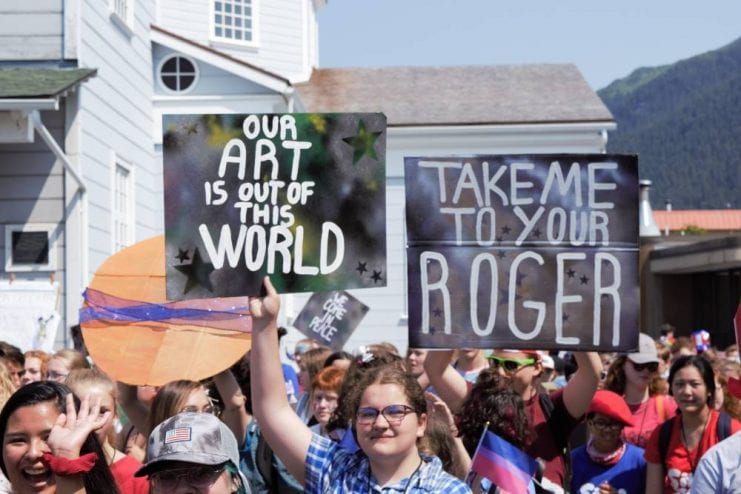
The Sitka Fine Arts Camp has won a $45,000 grant from the National Endowment for the Arts.
Although it’s a relatively small amount of money, the funding has major impact: It not only will help support camp programs, it also contributes to Sitka’s growing arts economy.
Unlike many nonprofit grants, the NEA money comes with few strings attached. It doesn’t require the camp to launch a new initiative, or to build or repair facilities.
“Some years ago I was actually in D.C. meeting with a program officer from the NEA,” said camp director Roger Schmidt. “You know, he said that ‘You don’t have to make a new program every year, you just have to do good work.’”
Getting the nod from the NEA Schmidt says is like getting an audit: Your organization has been vetted by the nation’s top arts funder and been found worthy. And for a camp that now offers programs and performances year-round, it’s especially great that it doesn’t have to create something new.
“There are so many grants, where it’s like, ‘We’d like to support you to come up with a new initiative,’ and you’re like, ‘Okay, so when in the day are we’re coming up with a new initiative?” Schmidt said. “We’re kind of busy with what we’ve already got going on.”
Schmidt says that tuition covers only 50-percent of the camp’s operating costs. The rest is made up through “contributed income.” The NEA funding is spent there, and helps keep all the parts in working order.
“It goes into our general operations at camp,” he said. “it’s part of the important side of contributed income that makes it possible for everything from scholarships, to art supplies, to hiring great summer staff.”
Schmidt says this is good for the camp, and good for the community. The amount of contributed income raised by the camp annually is substantial, and pays directly for the 900 meals a day the camp serves for four weeks during its summer sessions, its utility bills, sales taxes, and so on.
But, Schmidt says, there’s also leveraging. In the nonprofit sector, contributed income attracts contributed income. Although it’s never been added up community-wide, the Arts are a major industry.
“We brought in about $1 million in contributed income each year, for the last 10 years,” Schmidt said. “So that’s $10-plus million of added money into the economy. And that doesn’t include the indirect, you know: Every summer we have about almost 1,000 people come into the community who are coming because of our program. And they’re not staying a few hours. Our staff are here for anywhere from two weeks to eight weeks. You have parents coming in to see their kids perform and present their works at the end of each camp. So, bed and breakfast, Airbnb’s, hotels, restaurants – it’s a really big multiplier in the economy.”
All this amounts to big business for Sitka, which has many successful nonprofits. And Schmidt believes we see return on the investment every day.
“The difference (from for-profit businesses) is that at the end of the day, profits aren’t aren’t distributed amongst owners, or shareholders,” Schmidt said. “Profits are put directly back into the strength of the organization and its ability to expand and grow its mission. So when we grow, we don’t get richer. When we grow, our community gets richer.”






























